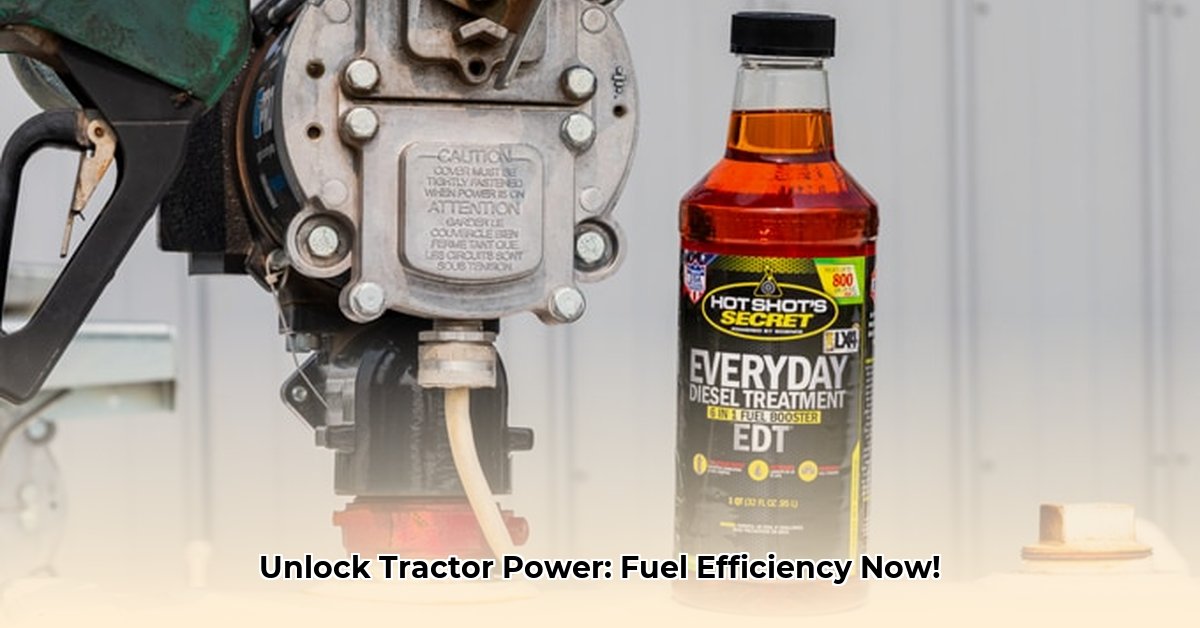
This comprehensive guide provides step-by-step instructions and detailed information on using diesel fuel additives to optimize your tractor's performance and longevity. We'll cover selecting the right additive, proper application, monitoring its effects, and navigating relevant regulations. For tractor part replacements, check out this resource.
Understanding Diesel Fuel Additives: Fueling Performance and Longevity
Modern diesel fuel, while cleaner-burning than its predecessors, often lacks the lubricity and cleaning properties of older formulations. This is where diesel fuel additives step in, acting as a performance enhancer and preventative maintenance tool for your tractor's engine. Think of them as a vital supplement to ensure optimal engine health and fuel efficiency. Ignoring this aspect can lead to premature wear and tear, increased fuel consumption, and costly repairs down the line.
Types of Diesel Fuel Additives and Their Functions
Several types of additives address specific diesel fuel shortcomings:
Cetane Improvers: Enhance the fuel's ignition quality, leading to smoother starts, improved combustion, and reduced emissions. (Improves how easily the fuel ignites).
Lubricity Agents: Compensate for the reduced lubricity of ultra-low sulfur diesel (ULSD), minimizing friction and wear on fuel injectors and other engine components. (Reduces wear and tear).
Detergents: Clean fuel injectors and other engine parts, preventing clogging and ensuring efficient fuel delivery. (Keeps your engine clean).
Fuel Stabilizers: Prevent fuel degradation during storage, maintaining fuel quality and preventing issues with aging fuel. (Keeps fuel fresh).
Water Control Agents: Remove water from the fuel, preventing corrosion and microbial growth within the fuel system. (Prevents fuel contamination).
Isn't it crucial to understand how different additives function to maintain optimal engine performance? This knowledge guides you toward making informed decisions based on your tractor's specific needs and operating conditions.
Choosing the Right Additive: A Tailored Approach
Selecting the appropriate diesel fuel additive is crucial; an incorrect choice can negatively impact your engine or even void warranties. Several factors influence your decision:
Fuel Type: Ensure compatibility with on-road or off-road diesel. Off-road diesel, often dyed red, has specific regulatory requirements. Using the wrong additive can violate these regulations, leading to penalties.
Climate: Cold weather necessitates winter additives to prevent fuel gelling and ensure easy starting. Conversely, hot weather may require additives that combat fuel degradation.
Engine Type and Age: Older engines might benefit from additives focused on cleaning and lubrication, while newer engines might respond better to additives that enhance combustion efficiency. Always consult your tractor's manual.
Budget: While some premium additives offer enhanced performance, it's essential to balance cost and value. Consider the long-term cost savings from improved fuel efficiency and extended engine life.
Reputable Brands: Choose additives from established manufacturers with a proven track record and EPA registration, ensuring product quality and regulatory compliance.
Did you know that a poorly chosen additive can actually harm your engine? Prioritize careful selection to prevent costly repairs and downtime.
How to Properly Use Diesel Fuel Additives: A Step-by-Step Guide
Adding a diesel fuel additive should be precise and safe. Follow these steps:
Carefully Read the Label: Dosage instructions vary by product and fuel tank size. Accurate measurement is critical; too little may not have a noticeable effect, while too much could be detrimental.
Precise Measurement: Use a measuring cup or graduated cylinder for accuracy. Avoid estimations.
Add to the Fuel Tank: Carefully pour the measured additive directly into the fuel tank before refueling.
Refuel Completely: Filling the tank after adding the additive ensures thorough mixing with the fuel.
Monitor Performance: Observe the tractor's performance for improvements in fuel consumption, smoother engine operation, and easier cold starts.
What's the single most important step in using fuel additives correctly? It's following the manufacturer's instructions precisely. A small mistake can lead to significant problems.
Monitoring the Effects: Tracking Performance Improvements
After adding the additive, monitor these parameters:
Fuel Efficiency: Note any increase in miles per gallon (mpg) or liters per hectare (L/ha).
Engine Operation: Assess if the engine runs quieter and smoother.
Emissions: Observe whether smoke is reduced, a sign of cleaner combustion.
Cold-Weather Starting: Does the tractor start more easily in cold conditions?
If you notice negative side effects like rough running or excessive smoke, immediately discontinue use and consult a mechanic.
Is it important to constantly monitor the effects of the additive? Yes, this allows for immediate detection of potential issues and timely corrective measures.
Regulatory Compliance and Legal Considerations: Staying on the Right Side of the Law
Regulations regarding diesel fuel and additives are location-specific. Confirm that your chosen additive complies with all relevant federal, state, and local laws. Non-compliance can result in substantial fines and legal repercussions. Always check with your local agricultural authority.
Knowing the regulations is not just recommended; it's essential to avoid potential legal and financial issues.
Conclusion: Optimizing Tractor Performance for Long-Term Savings
Using diesel fuel additives responsibly can significantly extend your tractor's lifespan, improve fuel efficiency, and reduce maintenance costs. It's investing in the longevity and productivity of your equipment. Remember, continuous learning and adaptation are vital as fuel additive technology evolves.
Appendix: Frequently Asked Questions (FAQ)
(This section would contain a series of FAQs based on common inquiries regarding diesel fuel additives, addressing topics such as compatibility with different fuel systems, expected performance improvements, and handling spills or accidental overdosing. The answers would be concise and easy to understand.)